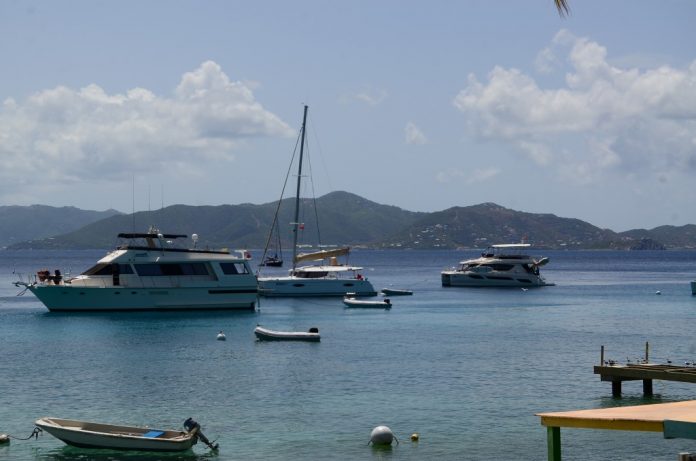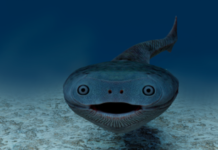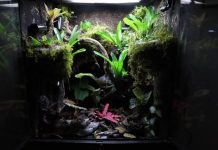On the morning of July 15, 2014, I woke up ready to embark on my journey to the British Virgin Islands with Jesuit’s Marine Biology program run by Assistant Principal of Academics Mr. Ben Kirby and biology teacher Dr. Todd Gruninger. It was an early morning, with the group meeting at DFW Airport at 6 a.m. Once everyone arrived, we began our long day of travel, eventually landing at the island of Tortola in the British Virgin Islands, where the the two owners of Dive BVI, Casey and Jeff McNutt, picked us up and took us on a short boat ride to where we were staying on Beef Island .
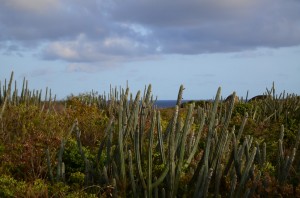
The first day in the beautiful British Islands started when I woke up to a bird singing outside my window, something I rarely experience in Dallas. Once everyone was awake and dressed, we met Casey and the rest of the staff for breakfast, introductions, and a short class about the marine life in the BVI. After the class concluded, we ate lunch and walked to the harbor to embark on our journey. Marine 1 traveled to George Dog Island on the Sea Monkey for their first dive, while Marine 2 ventured to Long Bay, riding on the Sea Dragon.
After the dive, everyone loaded back up onto the boats to head back to the marina. There, we rinsed off our gear and trekked back to Guavaberry to regroup and prepare for dinner at the Top of the Baths restaurant. At the restaurant, there was an unbelievable view of the sun setting over the water with the islands in the background.
On the second day in the British Virgin Islands, we had an exciting venture of diving at two different locations, and snorkeling at another. The first thing we did was eat breakfast at a restaurant located in the marina. Once everyone was finished eating, we hopped on the boats and headed out to a dive site known as The Chimney, where we had a competition to see who could identify the most fish species. This activity showed how we could use what we learned in the classroom and apply it to real life scenarios, which I thought was very cool.
The Chimney dive site was unbelievable, but Paul’s Grotto was just as amazing. At Paul’s Grotto we explored the coast of the island and entered the mouth of a cave where we saw mass schools of young fish that were using the cave as a sanctuary. After the dive at Paul’s Grotto, we headed back to the marina for lunch. Once we finished eating, we went to Savannah Bay for a snorkel off of the beach. After a short snorkel, Sarah and Andrea of Dive BVI taught us about the invertebrates that they found on the reef in the bay. We learned about the several different kinds of sea urchins and hermit crabs, and how the species eat, mate, and defend themselves. Once again, we ended our great day at the Top of the Baths restaurant at sunset.
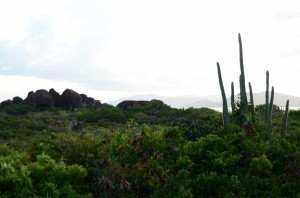
The third day in the BVI was turtle tagging day. The day started with breakfast and a short class, taught by Dr. Shannon Gore, concerning the different types of turtles and the tagging process in general. Once we had been instructed on how to catch the turtles, Marine 1 loaded up on the Sea Monkey and disembarked from the marina. The first method we used to try to catch the elusive turtles was searching for glimpses of turtles underwater as we were towed by the boat. There weren’t any turtles found this way, and several of us, including myself, suffered a few jellyfish stings. I was not a fan of the tow method to say the least, but the next place we went to redeemed my bad experience. At Little Dix Bay, we discovered several turtles were roaming around, and thankfully no jellyfish were spotted. After about twenty minutes of chasing the sea turtles, junior Luke Gomez Class of ’16 pulled up a 40-pound green turtle that took three guys to lift up onto the boat. This turtle had already been tagged, but it was still very intriguing to view in action the process Dr. Gore goes through when she’s with her team tagging turtles.
After the turtle tagging, we ate lunch then headed to the Baths, where Sarah provided us with a tour and explained how they were formed. The Baths received its name as a result of it being where slave traders would take the slaves to wash them. After the tour, we snorkeled through them down to Guavaberry Beach, where we hung out and ate dinner on the beach before a night snorkel. The night snorkel was a very interesting experience, as we were able to see all of the nocturnal organisms that you can’t see during the day.
On the fourth day of the trip, we went to the Rone dive site. The Rone was a ship that sank in the 1860’s due to a hurricane, and its ruins still lie on the ocean floor today. After diving the Rone, we headed to Cooper Island, where I ate the best fish and chips that I’ve ever had. Once everyone concluded their meal, we snorkeled all throughout the sea grass at Cooper Island. We headed back early to Guavaberry in order to leave ample time to prepare for Mass. After Mass, we ate at Top of the Baths and settled in for an early night.
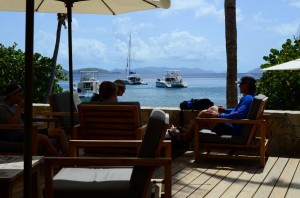
The sixth day of the trip was our last day going out on the boat to dive and snorkel. Although it was sad because it was our last day, we still had a job to complete, which included setting up the new Jesuit reef by doing some coral transplanting. The day started out with everyone venturing to breakfast together, but once we finished eating, we split up into Marine 1 and Marine 2. Marine 1’s job was to collect coral pieces for the reef at Long Bay. We were looking for fragments of staghorn coral that were not living in the current reef system to ensure we did not disrupt an ecosystem. Once we had collected enough pieces, we headed over to Baraka Point, where Marine 2 had prepped the reef for the transplants. I watched the coral transplants from the surface, and it was really cool to see everyone collaborate to create a better ecosystem for the coral. I also enjoyed seeing the new underwater camera that Jesuit purchased for the reef, as this marked the first time that Jesuit had installed an underwater camera. After all the coral was planted in the reef, the Marine 2 guys swam back down and took measurements of all the coral so that we can track the growth. While Marine 2 took care of that duty, my Marine 1 companions and I snorkeled the reef close to the coast. This snorkel was really cool because we saw a school of thousands of tiny silver fish. After Marine 2 finished the measurements, we headed back to Guavaberry and got cleaned up for a pizza dinner on the beach.
Our last day in the BVI was a calm and relaxing one compared to the days before it. For starters, we were allowed to wake up at 9 a.m. after being forced to wake up at 7 a.m. everyday. At nine, we had a quick breakfast consisting of donuts and granola bars and headed out to a beach to clean it up. When we first arrived, the beach had trash scattered everywhere. While cleaning, I found trash ranging from shoes, oil drums, and even a surfboard. It was amazing to see the progress that we had made from when we started to when we finished. After cleaning the beach, the faculty rewarded us with a free afternoon, which I spent on the beach and in the water to enjoy one last swim before we returned home. While hanging out by the beach, we discovered a mango tree growing several delicious, ripe mangos. After a few hours of lying in the sun, I headed back up to my cabin and cleaned myself up for dinner. We ate at a restaurant called Mermaid’s, which was on the water and overlooked a beautiful sunset. This being the last night of the trip, Casey made a video montage that captured all of the highlights of the trip. It served as a pleasant reminder of all the good times everyone experienced on the trip. After the video, we said our final goodbyes to all the staff, thanking them for the hard work that they had put in to make this a memorable experience for us.
The week that I spent in the BVI was the best week of my summer, and by far one of the most enjoyable and beneficial experiences that I’ve ever had. As Mr. Kirby would say, it truly is the “best program at Jesuit,” and I completely agree with him. I plan on taking Marine Biology 2 next summer, and I recommend that both rising sophomores and juniors consider taking the course for the wonderful experience.


